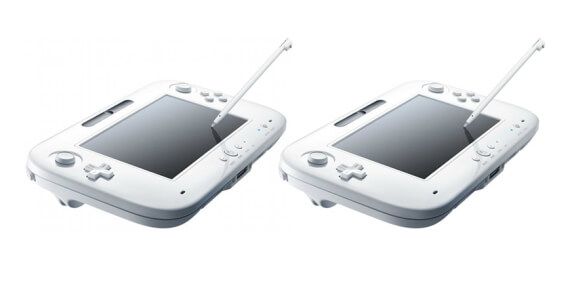You're certainly not alone if Nintendo's E3 press conference still remains somewhat unclear in your understanding. The announcement of the Wii U wasn't what many had been expecting, and surprised nearly everyone watching with yet another potentially game-changing innovation in how Nintendo's future titles will be played. Even a week later, the exact details concerning the Wii U and its ability to support the brand new tablet controllers are unclear.
But according to one industry analyst, an inside source has confirmed that each Wii U console packs the processing power necessary to support two of the new controllers, although there may not be a need for it. New details on the tech behind the console has also been released, so read on for the details.
All of this comes just days after rumors began circulating that each Wii U console would only be supporting one of the new touchscreen controllers. Nintendo's Shigeru Miyamoto later confirmed that rumor, going so far as to suggest that if they were going to add more screens, players might as well just stick to their 3DS.
It's safe to say that an announcement like that results in quite a few disappointed Nintendo fans, but the latest development may offer some hope. IGN is reporting that industry analyst Michael Pachter has spoken with Nintendo of America President Reggie Fils-Aime, and the Nintendo executive is claiming that Miyamoto's words may have been somewhat misleading.
These latest statements offer more possibilities, but read Pachter's statements carefully and you're likely to have just as many questions raised as answered:
"They were particularly unclear about whether the console would support more than one of their tablet-like controllers; Mr. Miyamoto said no, but Reggie said yes (to me in a meeting)... Obviously, they intend to ship the console with only one of these controllers, so it is unlikely that anyone will develop games that require two, but they were not clear whether the capability exists."
So there you... have it? Miyamoto says they're using one per system, but thinking about other possibilities, and now Fils-Aime apparently states that the Wii U could support two controllers, but that's something they aren't really thinking about. We don't want to jump to any conclusions, but it seems that the confusion experienced by every Nintendo fan in the wake of E3 is also present in the comapny's own offices, at least to some degree.
So while we wait for them to get their stories straight and break the habit of walking headfirst into Wii U controversy, what's becoming increasingly clear is that while the developers may not know how best to utilize the tech contained in the console, there's obviously enough there to keep their options open. Thankfully, we now know just what kind of processing power the Wii U will be utilizing, and some will be sad to hear that it is, indeed, last-gen.
Not that that's necessarily a bad thing. Details about the Radeon GPU have surfaced, describing a chip similar to the R770 of the last generation of processors. The machine is also capable of pumping out DirectX 10.1 graphics, and while that is still well behind the cutting edge of the industry, it does leave the Xbox 360 and PS3 in its dust.
In possibly the most interesting twist, the processor is apparently also capable of producing multiple video streams at once. While they may not be of a superb HD quality, it does cause even more speculation as to the use of multiple tablet controllers in addition to the main screen. Developers are still squeezing more and more power out of the Xbox 360 and PS3, so even though the Wii U may not be packing the processing prowess that some may have dreamed to hope for, it should give Nintendo a head start for the next few years at least.
What are your thoughts on the reported power of the Wii U? Do you wish they had spent more money on developing an even more powerful (and expensive) machine, or would you rather they decide once and for all just how said power is going to be used? Leave us your thoughts in the comments.

